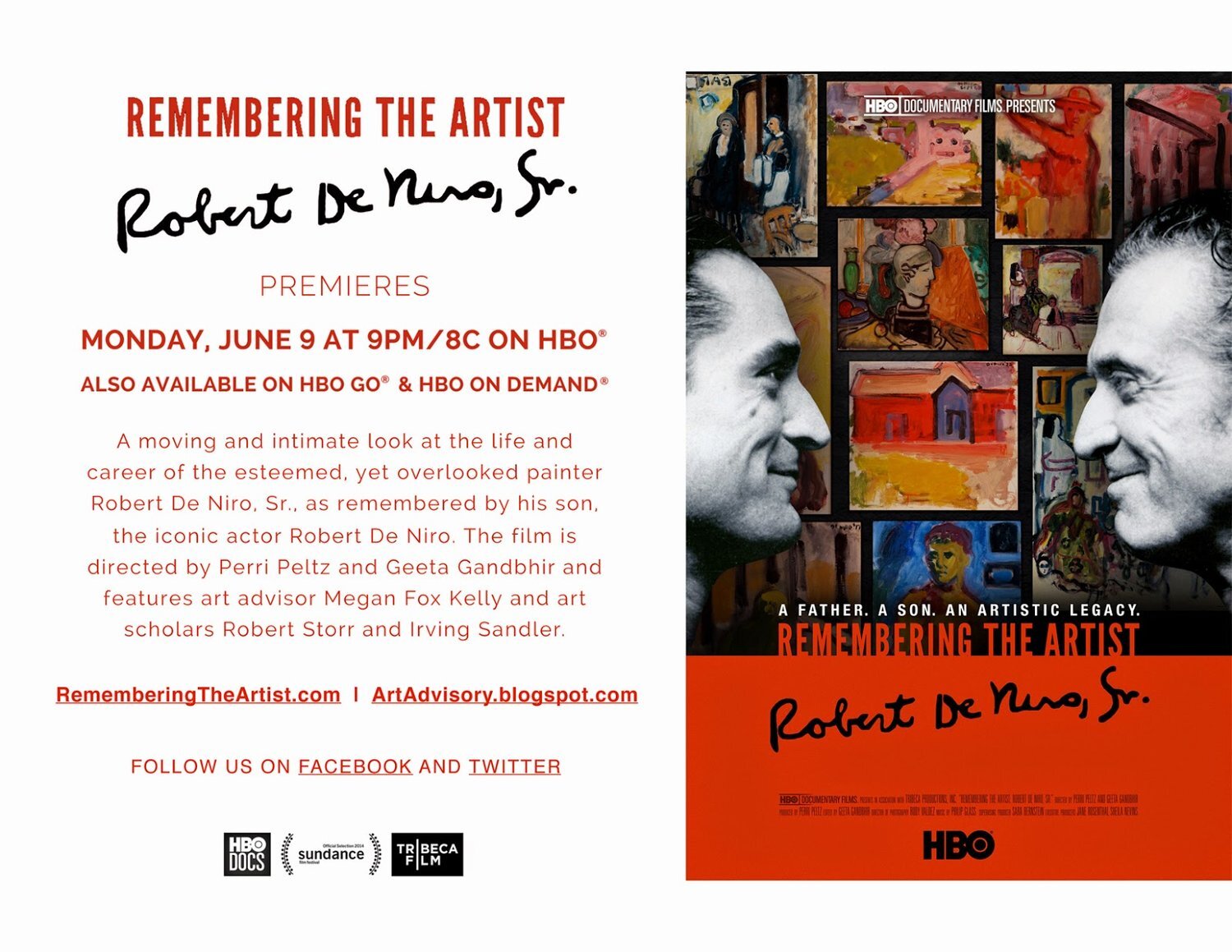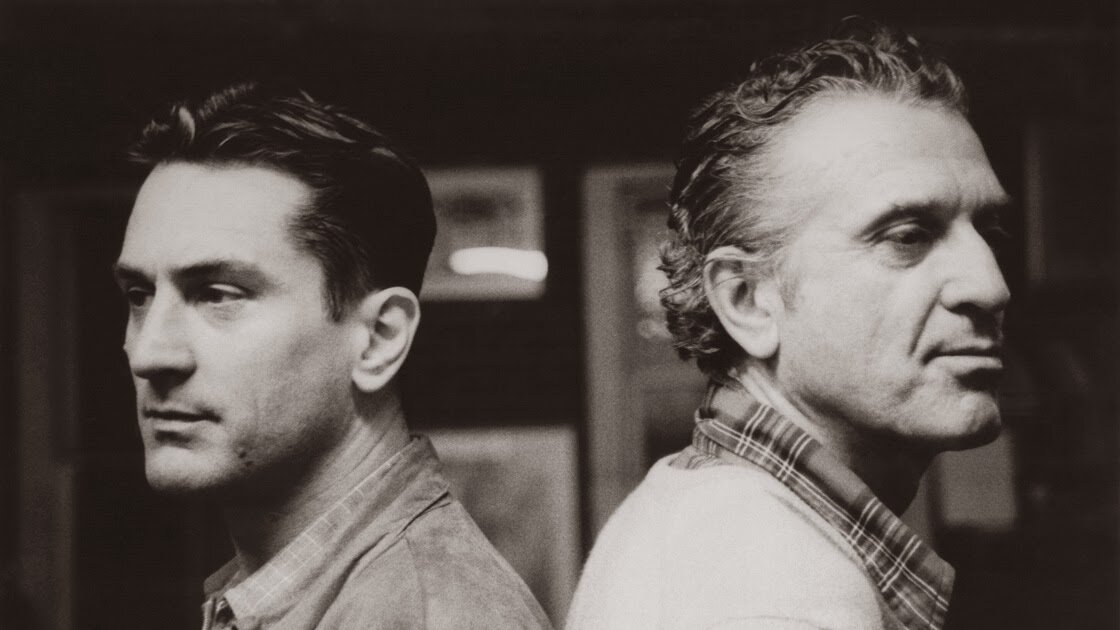HBO DOCUMENTARY FILMS PRESENTATION PREMIERES IN THE SHORT FILM PROGRAM AT THE 2014 SUNDANCE FILM FESTIVAL
In 1945, painter Robert De Niro, Sr.’s work was included in the fall exhibition at Peggy Guggenheim’s Art of This Century Gallery alongside the work of Jackson Pollock and Mark Rothko. The following year, De Niro had his first solo exhibition at Guggenheim’s gallery, an extremely prestigious honor for a young painter. However, this well-received exhibition would prove to be the highpoint of De Niro, Sr.’s public success. As his work soon fell out of step with the popular art movements of the time, De Niro struggled with poverty and desperation.
The HBO Documentary Films presentation REMEMBERING THE ARTIST: ROBERT DE NIRO, SR. is a deeply moving portrait of the painter told by art experts, the artists who worked alongside him, by De Niro, Sr. himself, via found footage interviews, and most affectingly by his son. Actor Robert De Niro, Jr. reads from his father’s letters and journals and provides his own moving recollections of his father’s personal and professional struggles as part of his own mission to honor and preserve his father’s legacy and artwork.
In REMEMBERING THE ARTIST, Robert Storr, Dean of the Yale School of Art, art advisor Megan Fox Kelly, and fellow artists Albert Kresch and Paul Resika explain how De Niro, Sr.’s professional career fell in and out of step with the American art scene – a scene that changed drastically in the years leading up to World War II. In the early 1930s, avant garde European artists, politically oppressed by the Nazi party, came to the U.S. and took up teaching positions, exposing young American art students to the newest trends in European art.
One of the most important of these teachers was Hans Hofmann, an Abstract Expressionist who set up schools in New York City and Provincetown, Mass., where an entire generation of young American painters studied. De Niro, Sr. studied in Provincetown and New York with Hoffman, who called him one of his most promising students ever.
De Niro, Sr.’s two shows at Guggenheim’s Art of This Century followed. At a young age, he had found his artistic voice and was greatly admired by his colleagues. He was part of the celebrated New York School of artists who were well-known during the 1940s and ‘50s. His paintings blended abstract and expressionist styles with a representational subject matter, bridging the divide between European Modernism and Abstract Expressionism.
De Niro, Sr.’s initial success was short-lived, as his work was eclipsed first by the American Abstract Expressionist painters and later by the emergence of Pop Art. As the art world embraced these new movements in the late 1950s and early 1960s, more traditional painters like De Niro were marginalized. De Niro went to Paris to immerse himself in the art of the masters and enliven his own work and career. But the art market of post-war France offered him little opportunity. He returned to the United States and continued to paint in relative obscurity until his death from prostate cancer in 1993 on his 71st birthday. He found solace writing about his hopes and dreams in his journals, hoping that one day, his work would be rediscovered and afforded the critical acclaim that had eluded him throughout his career.
REMEMBERING THE ARTIST also traces De Niro, Sr.’s personal story from his childhood in Syracuse, NY, where he felt misunderstood by his demanding father, to his marriage to Virginia Admiral, an up-and-coming painter herself, whom he met at Hofmann’s school, to the birth of his child, Robert De Niro, Jr. in 1943. When De Niro, Jr. was a toddler, his parents separated, likely because of De Niro, Sr.’s unacknowledged homosexuality. They would, however, always remain close. As De Niro, Jr., grew up, he observed his father’s career disappointments and bouts of depression. De Niro, Jr. movingly talks of the irony of dealing with the early days of his own success as an actor while taking trips to France to try to help his father, literally carrying paintings under his arm from art gallery to art gallery. Robert De Niro, Jr. has remained committed to honoring his father’s legacy after his death, maintaining his art studio as it was when his father worked there so that his children will appreciate their grandfather’s work.
REMEMBERING THE ARTIST: ROBERT DE NIRO, SR. was directed by Perri Peltz and Geeta Gandbhir and produced by Perri Peltz. Rudy Valdez served as director of photography and Geeta Gandbhir served as editor. Megan Fox Kelly served as art advisor. Music is by Phillip Glass.












